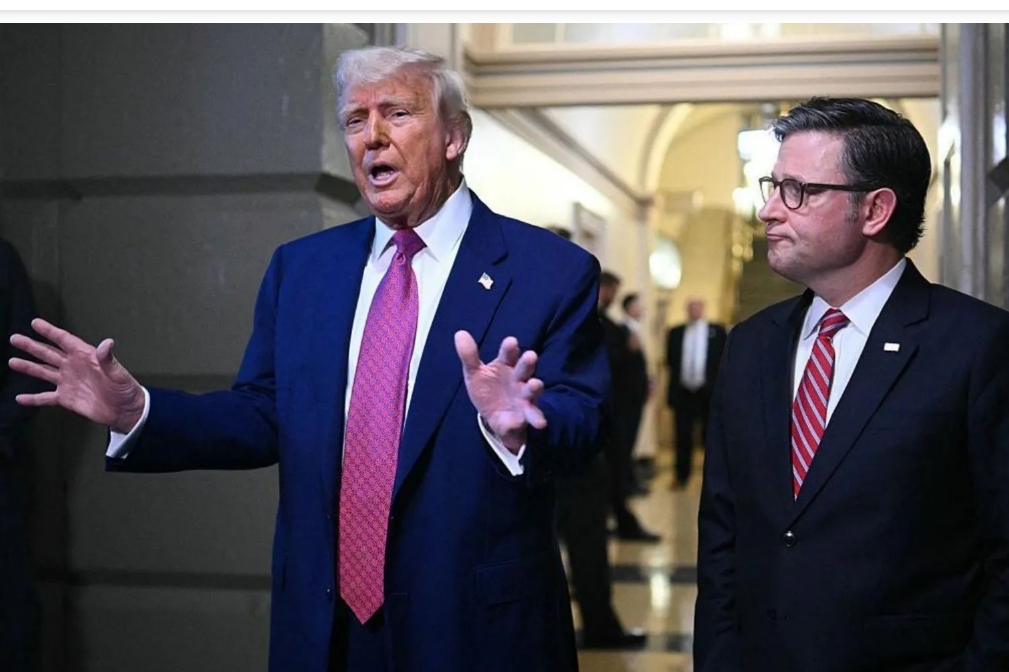Remittance from USA to India is just 21 % of total remittances

Tucked deep in Donald Trump’s sprawling abroad. clause that could quietly take billions from money sent abroad.
Tucked deep in Donald Trump’s sprawling “One, Big, Beautiful Bill Act” is a clause that could quietly “steal “ billions from money sent abroad. It proposes a 3.5% tax on remittances sent abroad by foreign workers, including green card holders and temporary visa workers such as those on H-1B visas.
For India – the world’s top remittance recipient – the implications are just peanuts, no matter what so called EXPERTS say. Though Other major recipients include Mexico, China, the Philippines, France, Pakistan and Bangladesh may feel the pinch, especially Pakis and Bangladesh.
In 2023-24, Indians working hard abroad sent back around INR 1096500 Crores ( $129 billions enough to finance half of India’s goods trade deficit and outpace foreign direct investment, according to a paper by Reserve Bank of India (RBI) economists. Of this only just INR 238000 Crores ($28 billions) or 21% from the US. For millions of migrants, that includes the money wired to cover a parent’s medicine, a nephew’s tuition or a mortgage back home. Trump is going to steal from this only.
This arrogant levy on remittances could skim billions from migrant workers, who already pay taxes in America and help America prosper. The likely result? Though this piddly amount will not affect us as a Nation, it will give rise to informal, untraceable cash transfers. Such hawala transactions ten open up avenues to terror financing. So Trump trough this bill will be directly responsible for terror financing.
India has remained the top recipient of remittances since 2008, with its share rising from 11% in 2001 to 14% in 2024, according to World Bank. India’s central bank says that remittances are expected to stay strong, reaching an estimated $160bn by 2029. The country’s remittances have consistently hovered around 3% of GDP since 2000.
India’s international migrant population grew from 6.6 million in 1990 to 18.5 million in 2024, with its global share rising from 4.3% to over 6%.
So over all, this Trump’s stealing a portion of hard earned money from Indians does not matter for India but if Indian skilled workers, technicians, doctors, scientists start shunning USA then Trump will have to stop trumpeting.
While the Gulf still hosts nearly half of all Indian migrants, skilled migration to advanced economies – especially the US – has increased significantly, driven by India’s global IT footprint. India should now takes step to cut down on elping out USA through its skilled manpower.
The US may be the top source of remittances worldwide, with its share rising from 23.4% in 2020–21 to nearly 28% in 2023–24, driven by a strong post-pandemic job recovery and a 6.3% rise in foreign-born workers in 2022. For India, the remittance from USA is just 21%, even wen 78% of Indian migrants in the US work in high-earning sectors such as management, business, science, and the arts.
Remittance costs – driven by fees and currency conversion – have long been a global policy concern due to their impact on families. While global averages of the costs remain above targets, India stands out as one of the most affordable destinations, reflecting the rise of digital channels and heightened market competition.
Thus Trump’s tax will be stealing a total of INR 8330 crores or $ 0.98 billions, hardly a drop in total remittances coming to India. Though it will be surely denting households in states such as Kerala, Uttar Pradesh and Bihar, where remittances fund housing and luxury goods. The tax could “hit household consumption of luxury goods “.
Remittances in India from USA is largely used for household consumption of luxury goods, savings and investment in assets like housing, gold and small businesses. However this small amount from USA will not shrink domestic savings and reduce investment in both financial and physical assets.
A study by Center for Global Development, a Washington-based think tank, suggests the proposed tax could sharply cut formal transfers, with Mexico facing the biggest hit – over $2.6bn annually. Other major losers include China, Vietnam and several Latin American nations like Guatemala, the Dominican Republic and El Salvador. India will belosing less than One billion dollars.
To be sure, there’s still some confusion surrounding the tax, and final approval is pending Senate action and the President’s signature.
“The tax applies to all non-citizens and even embassy and UN/World Bank staff. But those who pay taxes can claim a tax credit. Thus, the remittance tax would apply only to those migrants who do not pay taxes. That would mostly include unauthorised migrants (and diplomats),” Dilip Ratha, the World Bank lead economist for migration and remittances, told the BBC.
Dr Ratha wrote in a note on LinkedIn that migrants would try to cut remittance costs by turning to informal methods – hand-carrying cash, sending money through friends, couriers, bus drivers or airline staff, arranging local currency payouts via friends in the US, or using hawala, hundi and cryptocurrencies.
“Will the proposed tax deter unauthorised immigration to the US? Will it encourage unauthorised migrants to return home?” wonders Dr Ratha.
Not quite, he says. A minimum wage job in the US earns over $24,000 a year – roughly four to 30 times more than in many developing countries. Migrants typically send home between $1,800 and $48,000 annually, estimates Dr Ratha.
“A 3.5% tax is unlikely to deter these remittances. After all the main motivation for migration – migrants trying to cross oceans and rivers and mountains – is to send money home to help family members.”
So may be Govt of India should just donate INR 8338 Crores as alms to Trump.




